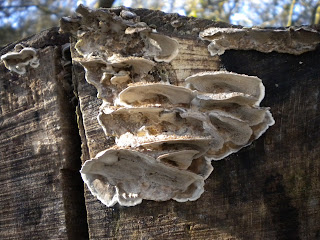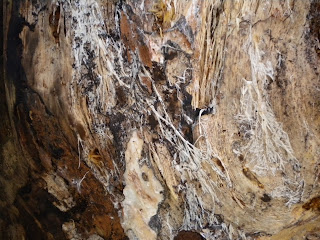 |
| Kilvey Hill. Seven months after being set on fire. |
Such events however, whilst being destructive did mean that other fungi which specialise in areas destroyed by fire took advantage and started to appear.
These fungi are described as 'phoenicoid' or firesite fungi.
Incidentally Kilvey Hill is covered with Lodgepole Pine (Pinus contorta) which is a highly flammable species which has evolved to depend on fire for its survival. Its cones need high temperatures supplied by fire to release the seeds from the cones. The fires set here are acts of vandalism but it's good to know that something positive comes out of the destruction.
I had been reading about phoenicoid fungi and decided to see if anything was growing on an area that had been burnt last year. There was; Plicaria endocarpoides.
Plicaria endocarpoides belongs to the Peziza family, commonly called 'Cup' fungi. As the name suggests they look like bowls or cups and Plicaria endocarpoides is a specialist that prefers burnt ground. Indeed there are many Plicaria and Peziza who can be found only in this kind of habitat.
Plicaria endocarpoides is often found in winter and can reach 6cm across. The photo of the fruitbody above was about 4.5cm across and I found a couple a little larger. The inside is smooth, finely wrinkled and coloured in shades of tan and brown whilst the outer side has a finely granular surface. Click on the photos to enlarge.



























































